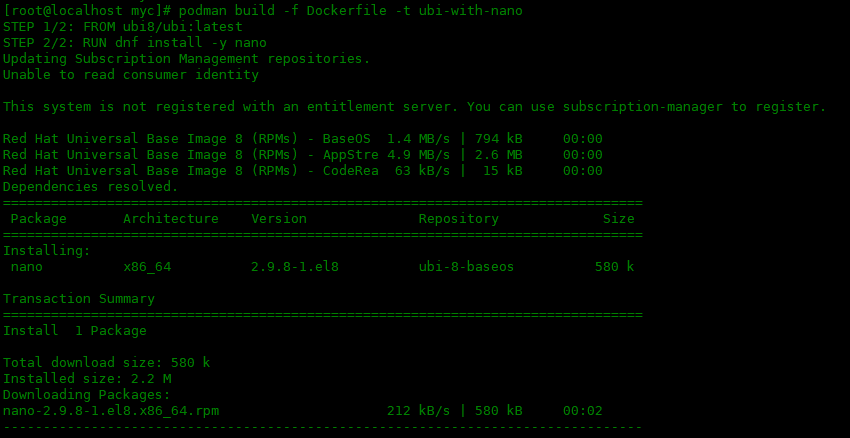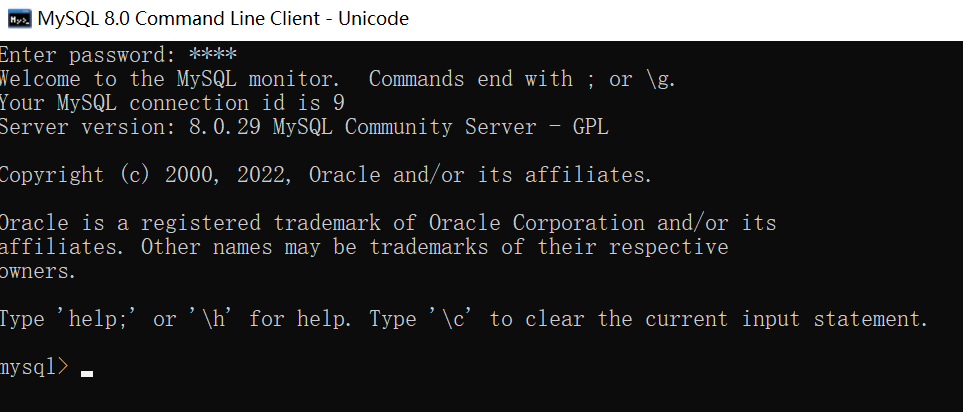环 境
Centos8
安装podman
Podman 是一个容器环境,首先在主机上安装 Podman。执行下面命令来安装podman:
[root@localhost~]#yum-yinstallpodman然后修改一下用户命名空间的大小:
[root@localhost~]#echo"user.max_user_namespaces=28633">>/etc/sysctl.d/userns.conf [root@localhost~]#sysctl-p/etc/sysctl.d/userns.conf user.max_user_namespaces=28633下面创建一个podman容器来看一下吧,下面使用的是RHEL的UBI镜像:
[root@localhost~]#podmanrunubi8/ubicat/etc/os-release Resolved"ubi8/ubi"asanalias(/etc/containers/registries.conf.d/001-rhel-shortnames.conf) Tryingtopullregistry.access.redhat.com/ubi8/ubi:latest... Gettingimagesourcesignatures Checkingifimagedestinationsupportssignatures Copyingblobce3c6836540fdone Copyingblob63f9f4c31162done Copyingconfigcc06568478done Writingmanifesttoimagedestination Storingsignatures NAME="RedHatEnterpriseLinux" VERSION="8.5(Ootpa)" ID="rhel" ID_LIKE="fedora" VERSION_ID="8.5" PLATFORM_ID="platform:el8" PRETTY_NAME="RedHatEnterpriseLinux8.5(Ootpa)" ANSI_COLOR="0;31" CPE_NAME="cpe:/oenterprise_linux:baseos" HOME_URL="https://www.redhat.com/" DOCUMENTATION_URL="https://access.redhat.com/documentation/red_hat_enterprise_linux/8/" BUG_REPORT_URL="https://bugzilla.redhat.com/" REDHAT_BUGZILLA_PRODUCT="RedHatEnterpriseLinux8" REDHAT_BUGZILLA_PRODUCT_VERSION=8.5 REDHAT_SUPPORT_PRODUCT="RedHatEnterpriseLinux" REDHAT_SUPPORT_PRODUCT_VERSION="8.5"

创建Dockerfile
现在可以创建一个 Dockerfile 来指定如何构建新的镜像。首先需要为 Dockerfile 文件创建一个目录:
[root@localhost~]#mkdir~/myc [root@localhost~]#cd~/myc创建一个文件Dockerfile文件,来建立一个新镜像:
[root@localhostmyc]#vimDockerfile FROMubi8/ubi:latest RUNdnfinstall-ynano

开始使用podman build来创建容器:
[root@localhostmyc]#podmanbuild-fDockerfile-tubi-with-nano [root@localhostmyc]#podmanbuild-fDockerfile-tubi-with-nano STEP1/2:FROMubi8/ubi:latest STEP2/2:RUNdnfinstall-ynano UpdatingSubscriptionManagementrepositories. Unabletoreadconsumeridentity ...

使用podman images来确认是否创建新镜像:
[root@localhostmyc]#podmanimages

现在你可以运行容器了,检查nano编辑器是否可用:
[root@localhostmyc]#podmanrunlocalhost/ubi-with-nano/usr/bin/whichnano /usr/bin/nano通过查看nano执行文件的位置,来检查是否安装。 Nano 现在已安装在你的自定义容器中。还可以交互式的运行容器:
[root@localhostmyc]#podmanrun-itlocalhost/ubi-with-nano/bin/bash [root@d1f0e46f2b6d/]#ls bindevhomelib64mediaoptrootsbinsysusr bootetcliblost+foundmntprocrunsrvtmpvar [root@d1f0e46f2b6d/]#

在容器中运行exit来退出容器。 可以使用podman ps来查看运行的容器,如果需要查看以停止的容器,可以添加-a选项:
[root@localhostmyc]#podmanps [root@localhostmyc]#podmanps-a

存 储
经常让新用户感到困惑的一件事是它们的短暂性。例如进入容器里创建的文件,退出之后,再次进入发现文件没有了。下面我们将容器中需要存储永久性文件的文件夹挂载到系统的某个文件夹中。下面在本机创建一个存储位置:
[root@localhost~]#mkdir/pod_data然后使用您的存储目录作为一些相关的挂载点来启动容器。此示例将本地目录/pod_data绑定到容器中名为/storage的位置,必须在目录位置附加:Z,以便 SELinux 可以在主机和 Podman 之间转换上下文。
[root@localhost~]#podmanrun-it--volume/pod_data:/storage:Zlocalhost/ubi-with-nano [root@d590bc344b76/]#echo"hellopodman">>/storage/msg.txt [root@d590bc344b76/]#exit exit [root@localhost~]#cat/pod_data/msg.txt hellopodman

可以看到目录绑定之后,在容器中写入数据,退出容器,在本机的/pod_data可以看到写入的内容。
审核编辑:刘清
-
LINUX内核
+关注
关注
1文章
316浏览量
21812 -
UBI
+关注
关注
0文章
9浏览量
4138 -
RHEL
+关注
关注
0文章
15浏览量
3041
原文标题:如何快速建立一个 podman 环境
文章出处:【微信号:良许Linux,微信公众号:良许Linux】欢迎添加关注!文章转载请注明出处。
发布评论请先 登录
相关推荐
如何在Docker中创建容器
理解Docker容器并畅玩docker
什么时候获取嵌入式的Servlet容器并启动Tomcat
从头创建Jetson的容器
在Rocky8安装并使用podman
使用podman-compose部署wordpress的示例
除了Docker我们还有哪些选择?
组织容器网络的原理及方案
Docker 教程:如何将Helix QAC作为容器创建并运行

Podman中运用容器存储库实用教程
Dockerfile镜像制作与Docker-Compose容器编排





 如何安装podman并创建podman容器
如何安装podman并创建podman容器












评论